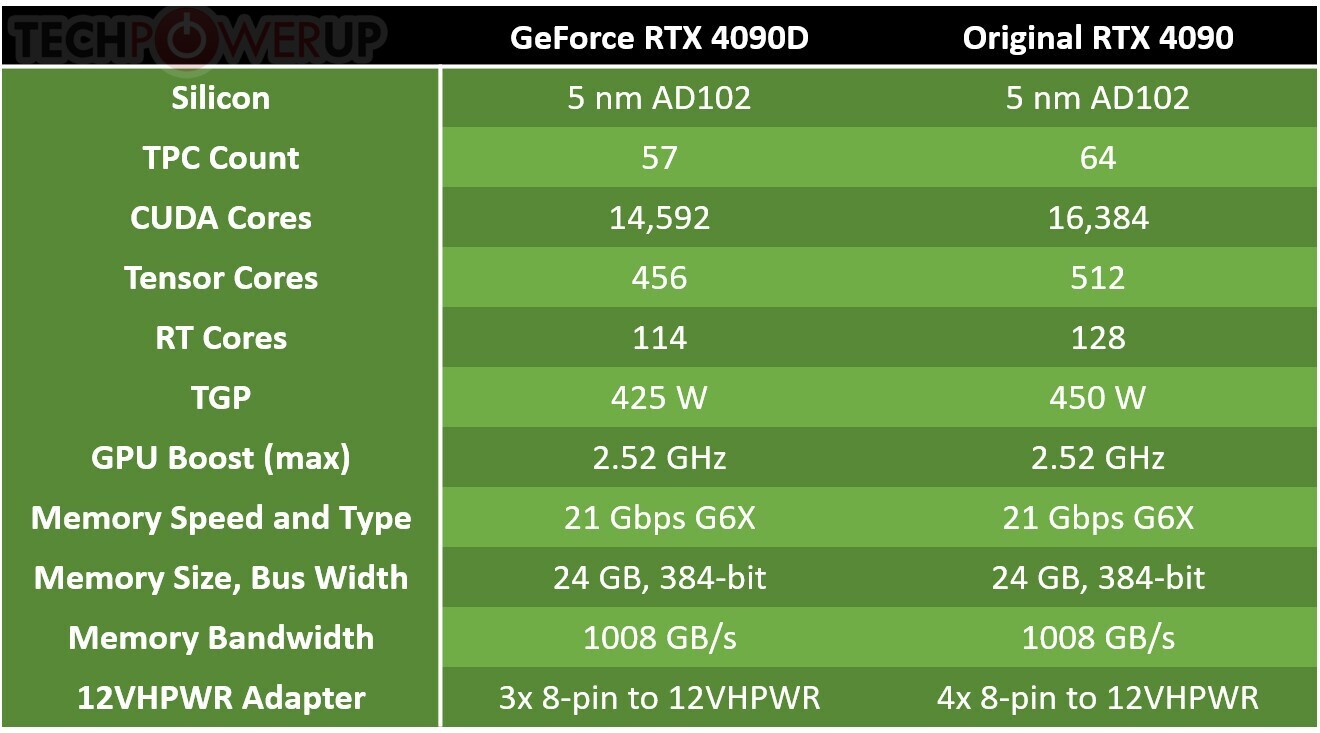NVIDIA has officially released the GeForce RTX 4090D graphics card designed specifically for gaming and creator applications in China. This comes after the United States Federal Trade Commission banned the export of the RTX 4090 (along with other AI GPUs) to China in October. The RTX 4090D has reduced AI inference performance compared to the RTX 4090 in order to comply with the limits set by the US-FTC. Measures have been implemented to prevent users from modifying the card into a regular RTX 4090. These include firmware and driver-level performance limiters, a different ASIC code, a different device ID, and a different core-configuration of the 5 nm "AD102" silicon itself.
The "AD102" silicon originally has 72 TPCs (144 SM), but NVIDIA has carved out 64 TPCs (128 SM) to create the original RTX 4090. The new RTX 4090D only has 57 TPCs (114 SM), resulting in a reduction in the number of CUDA cores, Tensor cores, and RT cores. The original RTX 4090 has 16,384 CUDA cores, 512 Tensor cores, and 128 RT cores, while the RTX 4090D is configured with 14,592 CUDA cores, 456 Tensor cores, and 114 RT cores. Both GPUs have the same clock speeds, boosting up to 2.52 GHz, but the power limits of the RTX 4090D have been reduced by 25 W. The memory sub-system remains unchanged. It is also worth noting that overclocking of the RTX 4090D will be limited to prevent users from achieving AI inference performance levels comparable to an RTX 4090. The baseline price for the RTX 4090D is RMB ¥12,999 ($1,840), which was the original launch price of the RTX 4090 in China before it became unavailable.
